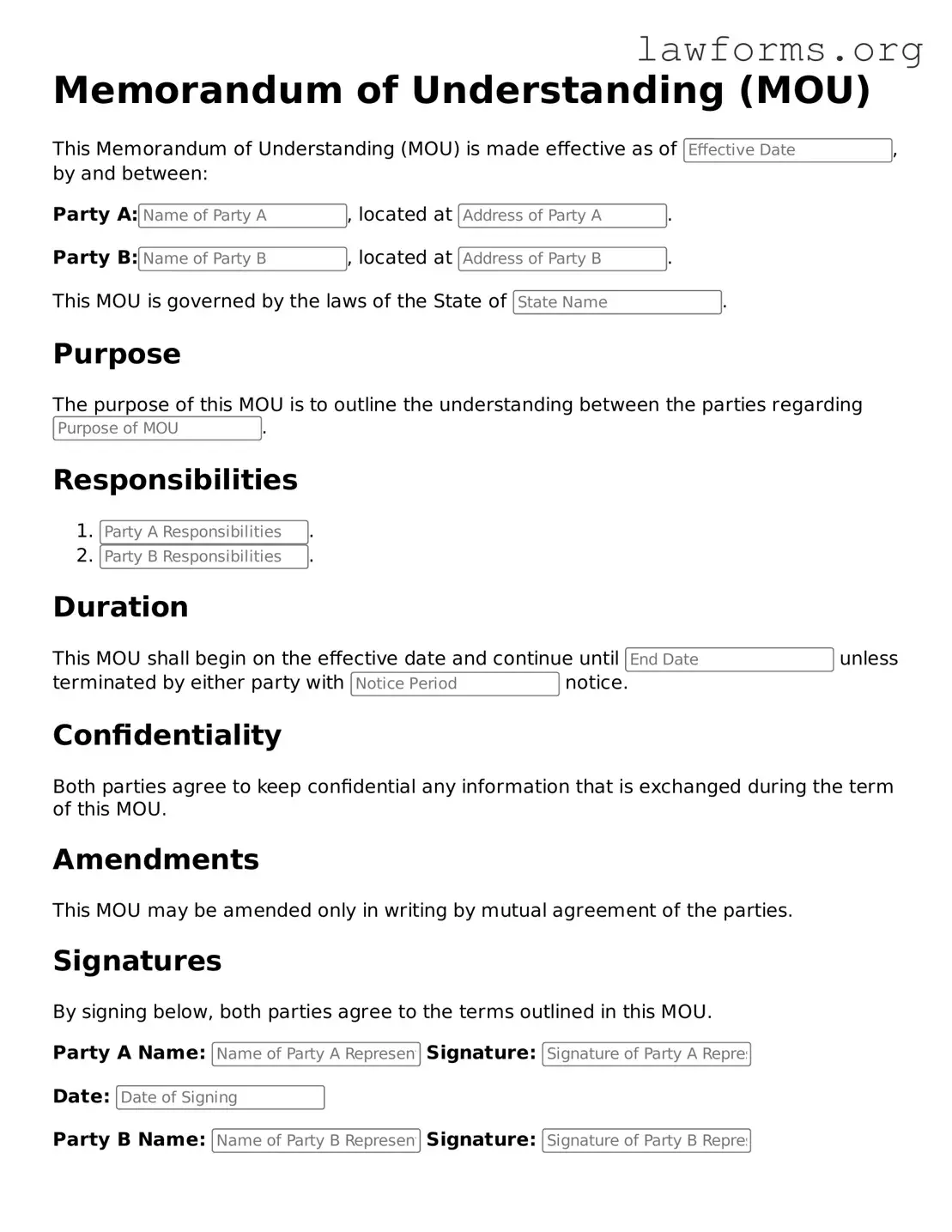Valid Memorandum of Understanding Form
A Memorandum of Understanding (MOU) is a formal agreement between two or more parties that outlines their intentions and the terms of a collaborative relationship. While it is not legally binding, it serves as a crucial tool for clarifying expectations and responsibilities. If you're ready to establish a clear framework for your partnership, fill out the form by clicking the button below.
Customize Document Online
